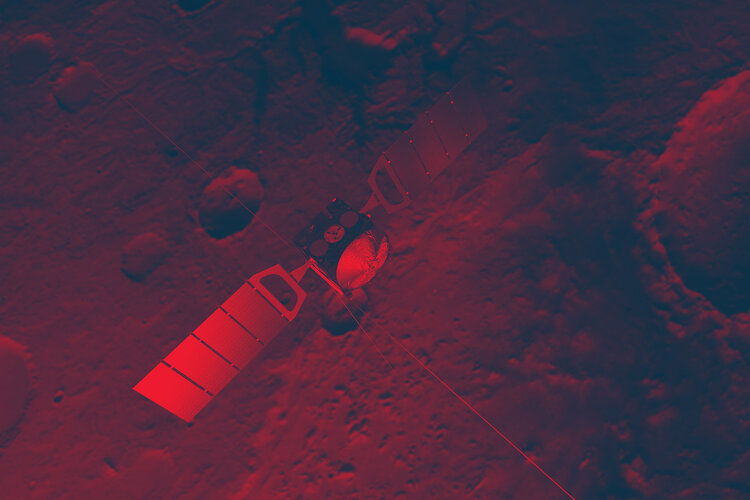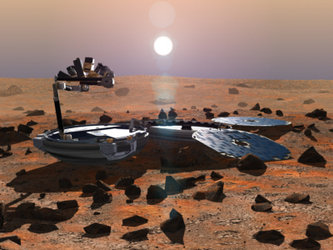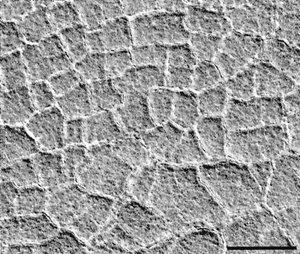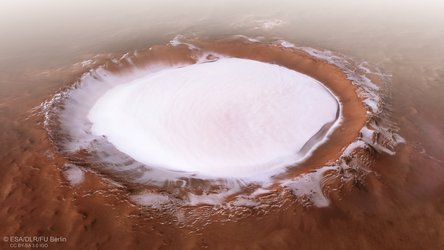What lies beneath...: An interview with Giovanni Picardi
Giovanni Picardi's MARSIS is a big instrument with a big job to do. Standing for ‘Mars Advanced Radar for Subsurface and Ionospheric Sounding’, it will be the longest structure ever flown in Martian orbit.

Prof. Giovanni Picardi
Head of Remote Sensing Systems at the University of Rome 'La Sapienza'
Principal Investigator, MARSIS, Mars Express
Born: December 1936 in Sarnano, Italy
PhD in Electrical Engineering at the University of Rome 'La Sapienza', 1960. In 1961 he joined Selenia SpA (now Alenia SpA) working on radar signal processors. In 1970 he began teaching Cybernetics and information theory at the University of Perugia. In 1975 he joined the University of Bari as a Full Professor of Electrical Communications.
With ESA and the Italian Space Agency (ASI), he has been a member of the Science Teams for Rosetta, MORO (Moon Orbiting Observatory) and Intermarsnet missions. He is also a member of the Cassini Radar Science Team and the SHARAD Science Team, and Co-Investigator of the Rosetta CONSERT experiment.
Married with two children and four grandchildren, Giovanni's hobbies are sailing with his grandchildren in his small boat, discussing Mars and dreaming of flying there himself one day.
ESA: Here we are, almost at Mars. So how do you feel?
Giovanni Picardi
I have been working on this mission a very long time, and now Mars Express has almost arrived at its destination I cannot deny I feel very excited and worried at the same time. Like everyone else I can only wait, and hope the mission will be successful!
When I was young, my dream was always to fly in space.
ESA: What first inspired you to become involved in space, and how did you start working in the space field?
Giovanni Picardi
When I was young, my dream was always to fly in space. My professional field of activity became radar design, especially in the field of remote sensing, using aircraft- or satellite-mounted radar or altimeters to look back down at the ground.
Working in this way led me to think about my job in a higher dimension, so that I was mentally detached from the Earth and started thinking about missions in space.
And that is what MARSIS is, basically a ground-penetrating radar system of a type that has been used on Earth many times before, but applied to another planet for the first time, to address scientific questions that cannot be answered in any other way.
Except that on Earth, these radars are usually operated from the ground or an aircraft, to look perhaps a few tens of metres underground for water or buried objects. On Mars we need to look much deeper, up to five kilometres underground, and we are doing it from further away – from 800 kilometres above the surface.
Who knows, maybe one day I will be able to fly to Mars.
ESA: What drives you in your job, and what fascinates you about Mars in particular?
Giovanni Picardi
My job allows me to indulge my passion for travelling to faraway countries, and flying I find myself looking at the sky and thinking about what an immense Universe we live in. My greatest wish is to find out more about our neighbouring planets, and who knows, maybe one day I will be able to fly to Mars, the most similar world to our own.
It is that similarity that most fascinates me about Mars, its mysterious essence expressed in that fascinating copper light we can admire during clear starry summer nights.
MARSIS is an attempt to answer one of the most difficult questions about the history of Mars.
ESA: What do you most want to find with the MARSIS experiment?
Giovanni Picardi
MARSIS is an attempt to answer one of the most difficult questions about the history of Mars: what happened to all water that once carved channels across the young planet's surface?
Some of it may have evaporated out to space along with the majority of the Martian atmosphere, but the rest may still be on the planet, held somewhere deep underground, either frozen as ice or remaining liquid.
MARSIS will send radar waves down to the planet's surface. Many will echo back off the surface but some will penetrate and send back echoes upon encountering geological structures, possible sedimentary layers, ice or liquid water. The precise depth of the Martian permafrost is unknown, which is why the instrument has been designed to look so deep.
Our greatest ambition would be to actually find liquid water, because this is the basis of life, both in scientific thought and also according to the Greek philosopher Eraclito's ancient principle of ‘panta rei’ – everything flows!
ESA: If there is one message you can give someone considering entering the space field, what would it be?
Giovanni Picardi
I would suggest that they follow my own personal conviction: be professional, but not too serious - enjoy the game!










